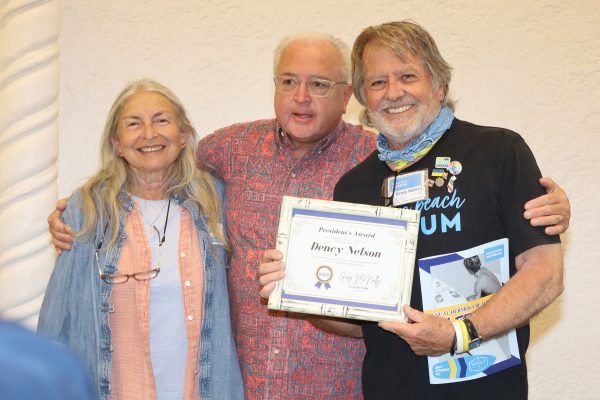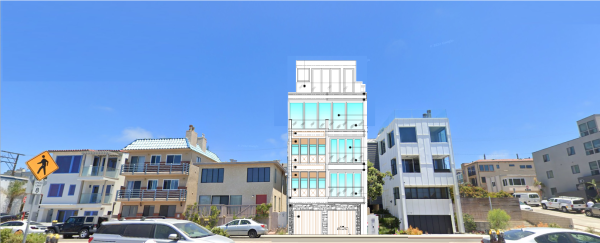By Richard Foss
Note: Written in 2005
One of the worst dining mistakes of my life was in a Thai restaurant. Almost thirty years ago my brother and I went into one because it was the closest thing to a hospital where a friend was ill. Recognizing nothing on the menu, we ordered a few things at random and told the owner we liked things really spicy. He had so few non-Thai customers that he didn’t know we didn’t know what we had asked for, so he whipped up a meal that would have been powerful even to a Bangkok native. After the first bite, I thought I was going to die on the spot.
The days when Thai food was an obscure cuisine are long gone, as are the days when a Thai restaurateur would think that a complete newcomer to the cuisine really wanted it Thai hot. Thai influences are well within the American cultural mainstream, and you can get a tamed version of Pad Thai at some coffee shops. More interestingly, Thai chefs are experimenting with fusions between their traditional cuisine and the rest of the worlds. In the South Bay, Chaba Thai Bay Grill is by far the best proponent of this cuisine.
As soon as we walked into Chaba it was evident that there’s some ambition here – the décor is upscale, the music hipster alternative rock, the bar scene lively. We were seated after a wait of a few minutes, during which time we were given menus to study. They were worthy of consideration; along with a fair sampling of the usual Thai dishes were items like Thai bouillabaisse and shabu-shabu, grilled shrimp with hot pineapple sauce, and a grilled salmon salad with sesame vinaigrette flavored with the Icelandic caviar called masago. We ordered a mix of classic and novel items in order to test the kitchen as best as possible.
For an appetizer, we selected fried green tea calamari tempura. Smoking things in green tea leaves is a classic Chinese preparation, and we were curious about how green tea would work in a fried dish. We weren’t sure whether green tea powder was added to the tempura batter or whether the batter was made with tea instead of water, but there was a hint of fresh herbal flavor that was refreshing. The calamari was slightly over-fried so that the batter flaked off easily, the only error in cooking of our entire meal. I plan on ordering this dish on my next visit, as I liked it even when it was a bit overdone.
The “Thai Bouillabaisse” arrived at about the same time as the calamari, and turned out to be the standard spicy lemongrass broth used in the famous Tom Yum soup but with a variety of seafood instead of the traditional shrimp. Lemongrass and chili are such powerful flavors that they can overwhelm delicate seafood, and though the crab, scallops, mussels, and fish added variety of textures, they really didn’t change the flavor much. It was a good seafood soup, but at that point in the meal I wasn’t highly impressed.
That changed with our main courses, the “Lamb Shank Musman Stew,” roasted duck with crab fried rice, and Thai eggplant with sweet basil. The lamb shank was a remarkable reinterpretation of an Italian osso bucco, but with a Thai red curry instead off the usual wine and herb sauce. The Musman curry, a traditional blend of cocoanut milk, cardamom, and cinnamon with hot spices, was a brilliant combination with lamb, and the Thai pickles and turmeric rice were well suited to accompany it. The lamb was the centerpiece of our meal, an entrée that stands with the best Thai-inspired items I’ve had anywhere.
The roasted duck was mildly spiced in the Chinese traditional style, which was fine with us as it was a good contrast to the spicier items we had ordered. The slow-roasted meat came with Chinese greens that had just a touch of exotic spicing, a garnish of raw vegetables, and a large portion of crab-fried rice. It was beautifully presented and though the portion was ample we devoured every last bit.
The other entree we ordered, eggplant with sweet basil, is a fairly traditional item. I had wondered if the restaurant’s penchant for experimentation would go so far as to tinker with this basic item of a Thai meal. They don’t fix what doesn’t need fixing, and allowed the simple flavors to shine. There was just a dash of some other spice in there, but it was used so subtly that we couldn’t tell what it was even when we focused on it.
We accompanied our meal with the usual beverages, Singha beer and iced tea, and two glasses of wine. The usual wine pairing with Thai food is a Gewurztraminer or Riesling, a white with enough acid balance to match the spiciness. Several are offered by the glass at Chaba, and my experiments confirmed the wisdom of this strategy. The more full and oaky wines do strange things when confronted with spice, but the Hogue Riesling and Morgan Pinot Gris shone with just about everything.
Some desserts were offered, and though we had over-ordered on main courses we had to investigate them. I was intrigued by the idea of a Thai restaurant serving Boston cream pie so I ordered it. It was a surprisingly good companion to the meal, the rich cream cooling the slight afterburn I had from experimenting with the contents of the condiment tray, all of which were on the piquant side. The cocoanut ice cream was more typically Thai and also a good way to end the meal, a hit with our children though a bit sweet for me.
Chaba Thai Bay Grill is priced reasonably – starters run from six to thirteen dollars, main courses from nine to seventeen dollars, and our meal for five ran just under a hundred dollars. There are cheaper Thai places around, but they don’t offer an experience as varied, a setting as lovely, or the thrill of finding an unsuspected synergy between Thai and European ideas.
Chaba Thai Bay Grill is located at 525 S, PCH in Redondo Beach. Handicap access good, off-street parking available. Children welcome, full bar. Call 310-540-8441 for reservations.









